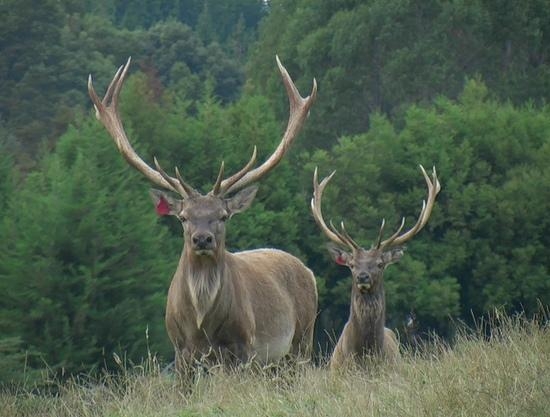
As a relatively new and small industry the deer sector has been able to grasp changes in agriculture and implement quickly for positive results.
Quality farming systems was an early industry initiative and a landcare manual was drawn up to guide industry best practice.
This was a voluntary project but in todays world strict environmental practices are insisted on by regional council bodies and early implementation of such systems has allowed participators lead time to accumulate funds for the changes needed.
As we have seen when deer were in the wild these animals can cause degradation to the landscape from grazing of native species to wallowing in the waterways and running ruts in fencelines.
Often size and quality are in conflict so it is pleasing to read of Graham Carr's goals to complement the environment into a large well farmed livestock system.
A farmer with nearly 9,000 deer who once never put much thought into improving the environment on his farm, has become a fully converted believer reports Stuff.
Graham Carr estimates he has spent hundreds of thousands of dollars during the past four years fencing off waterways and putting in settling ponds, so the water coming off his farm at Peel Forest Estate in South Canterbury is crystal clear.
Carr has built up one of the largest deer herds in the country, since emigrating to New Zealand 25 years ago from Britain, where he came from a joinery background.
He was inspired by deer pioneers such as Mark Acland and Tim Wallis, who were among farmers attending a field day yesterday celebrating his winning of a section award at the Canterbury Ballance Farm Environment Awards, and a deer industry award for commitment to sustainability.
Carr said Wallis fired his passion for deer farming, but his enthusiasm for looking after the farm environment came later. "I am a bit like a reformed smoker. I didn't like the fact that my farm wasn't tidy and didn't make an effort, and [he] did one waterway and that fired me up. Since then, I have been a great advocate and have gone from an embarrassment to a source of pride."
Reducing deer access to streams and merging two creeks into one waterway has increased his farm land, ensured health problems are not passed downstream and made his property more valuable. Deer wallow in creeks with mud pits encroaching on paddocks. Settling ponds were put in to reduce sediment in the water and some of the soil was used to fill in creeks, with many trees put in around the farm.
His land base is now 1,050ha at the estate and he is close to buying about 1,200ha on a neighbouring hill block and leases another 280ha.
Today, the farm produces nine tonnes of velvet a year, supplies about 2,000 animals for venison and sells through auction or privately a range of breeding sires and trophy stags.
He brought in genetics from Yugoslavia and Furzeland red-deer bloodlines from England, to raise the quality of hunting herds, and he breeds and supplies trophy sires to about 100 breeders. More recently, he bought the Windermere stud near Hamilton, which he describes as the best red-deer velvet stud in the world. After concentrating on dual-purpose and trophy animals, Carr and manager Steve Blanchard have shifted to venison genetics, and produced terminal sires called B11's for fast-growing progeny and maternal animals called forresters.
We welcome your comments below. If you are not already registered, please register to comment
Remember we welcome robust, respectful and insightful debate. We don't welcome abusive or defamatory comments and will de-register those repeatedly making such comments. Our current comment policy is here.